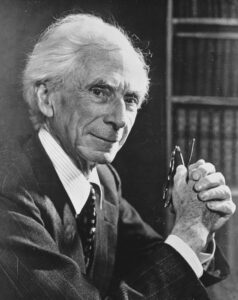INTRODUCTORY ABSTRACT:
In this article, we will be discussing the concept of denoting that has been promulgated by Bertrand Russell. His ultimate work on denoting were related to the phrases such as a man, the man, some man, any man and every man and the king of France. For example, these sentences they’re working. Their interpretation is a very complex task. It requires a deep and a critical approach in order to comprehend things into its right perspective and investigate the aforementioned categories of words. He created three different segregations. The first segregation was that the words that seem to be denoting something but are not actually denoting, for example: The current just of Supreme Court and then comes the another segregation that is pertaining to the words that are denoting a definite description, such as in the case of the present king of France which is denoting one and particularly one individual only and then comes the last manifestation of this type in which he is trying to make the point that the terms or denoting something Ambiguously in the case of a man, if you take this example.
MAIN EXPLANATION:
Interpreting and delving deep into the fragments of these words and terms is considerably a difficult task and Russell creates a theory in order to remove these problematic issues but before approaching to his theory, it is important to witness and see how he has criticized two of the leading philosophers of his time, the first one being: Frege and the second is Meinong.
He attempts to criticize Frege by, Highlighting the fact that when he is saying that there are two semantic aspects of every term, the first one being the science and the second being the reference after that when he says that each and every word is expressing a meaning and denoting a day notation and his definition about sends all of these things are erroneously incorrect. Russell has led the primary point of contestation with this philosopher’s theory by Gray’s elegy that: “ The present king of France is bald” this is not a statement about the complex meaning but about the specific man in the denoted meaning.
And in the case of the another philosopher, which has been severely criticized by Russell, it is primarily because of the reason that Meinong has ultimately fallen into the pit of committing the aggravated violence and violating the law of non-contradiction, whereas it has been explained by Russell that this particular philosopher has remarked that a particular round circle is both round and round, which is in itself moronic and inconsistent with the grounds of logic.
In response to all of these criticisms, now he provides his own response that is in the form of his own individual theory that is helping us to solve all the problems that has been highlighted by him. He says that the denoting phrases which are used in a particular proposition, do not contain a meaning in themselves, but the proposition in which they are used as verbal letters and expressions does contain a meaning. In order to clarify his stand, he then further divides as well as describes definite descriptions in definite descriptions and descriptions that could be used for things that do not really exist. For example, the case of round square.
In the case of indefinite description, he has stated very consciously that the denoting phrases in propositions cannot explain, or do not have, in parts any meaning, But rather, they are markedly different from the proper name propositions. “A” It means that there is at least one entity that corresponds to the 2 Proposition functions.
And in the case of definite descriptions, it is almost the same as the indefinite descriptions, but there is a one major change in it, and that is the case of the term “the” Here it is understood as that there is One and only one entity that corresponds to the particular given proposition function. Russell hereby declares that The proposition is having a significant meaning, and in the cases with the lack of the constituent that is denoted by the description, it does not affect the meaning of the proposition. It could be further understood by the lenses of the fact that the denoting face, although it is very essential within the particular proposition, is not denoting some entity.
CONCLUSION:
Russell provides three of the logical puzzles. The first one being substitution of the identical, the secondary is the problem of excluded middle, and the last puzzle is the case of negative Essential. This could be further understood by the example when Russell is Using the instance of:
P1: The round square is existing
P2: The round Square is non-existent
In the upper mentioned proposition is the main part which he wants to highlight by his puzzles or by his theory is simply this very fact that we do not have to get into the “paltry evasion” But rather, we just have to understand how the definite descriptions work, which would thereby determine the truth of these negative essentials without getting into the midwifery Of declaring whether around square is actually existing. We need to comprehend the things into and not just indulge in theoretical abstractions which could not provide us with anything substantial in the case of our epistemological upgradation.
REFERENCE:
Russell, B., “On Denoting”, Mind Journal: Oxford, 1905, pages: 479-493.
https://en.wikipedia.org/wiki/Knowledge



























